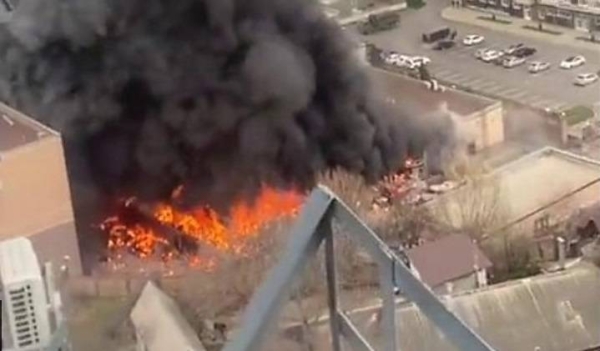
The rate at which infrastructure is built on prime farmland in England has risen a hundredfold in the past decade, a report has found, as it calls the country’s food security into question.
Farmland that could grow 250,000 tonnes of vegetables a year has been lost to development, with 300,000 homes built on prime land since 2010.
There was a huge rise in “best and most versatile” agricultural land set aside for housing and industry between 2010 and 2022, up from 60 hectares (148 acres) a year to more than 6,000.
Politicians have been looking at the way land is used in the country, as in order to tackle the climate emergency as well as feed people, farming must become lower-emission, more productive and increase biodiversity.
This means that low-grade farmland, which requires more irrigation and fertiliser, may have to be used for infrastructure instead of prime land, which is more efficient for growing food.
As well as being at risk from development, prime land is also more at risk of flooding, raising deeper questions about food security as Britain experiences more extreme weather events as a result of the climate crisis.
Sixty per cent of grade 1 agricultural land (more than 200,000 hectares) is within flood zone 3, the areas at highest risk of flooding.
CPRE, the countryside charity that published the report, is calling for the government to produce a comprehensive land use strategy, setting out what type of land should be used for which purpose and is asking for a “brownfield first” approach to housebuilding. It is also calling for a firm presumption against development on prime farmland.
The government has been working on a land use framework that, before Boris Johnson’s resignation, was due for publication in the coming weeks, but sources at the Department for Environment, Food and Rural Affairs said it could be delayed until the new prime minister is in post.
Crispin Truman, the chief executive of CPRE, said: “For the first time in several generations, our food security is at risk – yet we’ve seen a hundredfold increase in the loss of our best farmland to development since 2010. Heating, eating and housing are fundamental needs. A healthy environment, mitigating and adapting against the devastation threatened by the climate emergency, is the bedrock that underpins them all. We need to know what to put where. That’s why we need a land use strategy.”
The government recently admitted that the country needs to produce more of its own food, in its food strategy.
However, to reach net zero and stop biodiversity collapse, farming also has to change to become more sustainable. Experts have said this means looking at the way land is used and perhaps making some changes.
Truman added: “As we face a cost of living crisis, housing crisis and the adjustment of our farming sector to post-Brexit subsidies, we have multiple, critical priorities for our land. We need to move away from intensive farming practices and towards a more ‘multifunctional’ approach, reconciling food production with better management for natural and cultural heritage, and for public access. Policies which are put in place now will be crucial in the coming years to ensure the most efficient use of our land in the face of these challenges.”
Food charities have welcomed the report. Rob Percival, the head of food policy at the Soil Association, said: “Decisions concerning land use are complex and inadequately supported by government policy. Given competing demands for food, nature, climate adaptation, and societal demand for new homes, transport and energy infrastructures, it’s essential that government expedites its delivery of a land use framework.
“This framework, promised for 2023, should ensure that land is used for the purposes it best serves, with prime farmland harnessed for agroecology and the production of healthy foods. It’s high time we got on top of the challenge. The land use puzzle is only going to get more confounding as the climate and nature crises escalate.”











